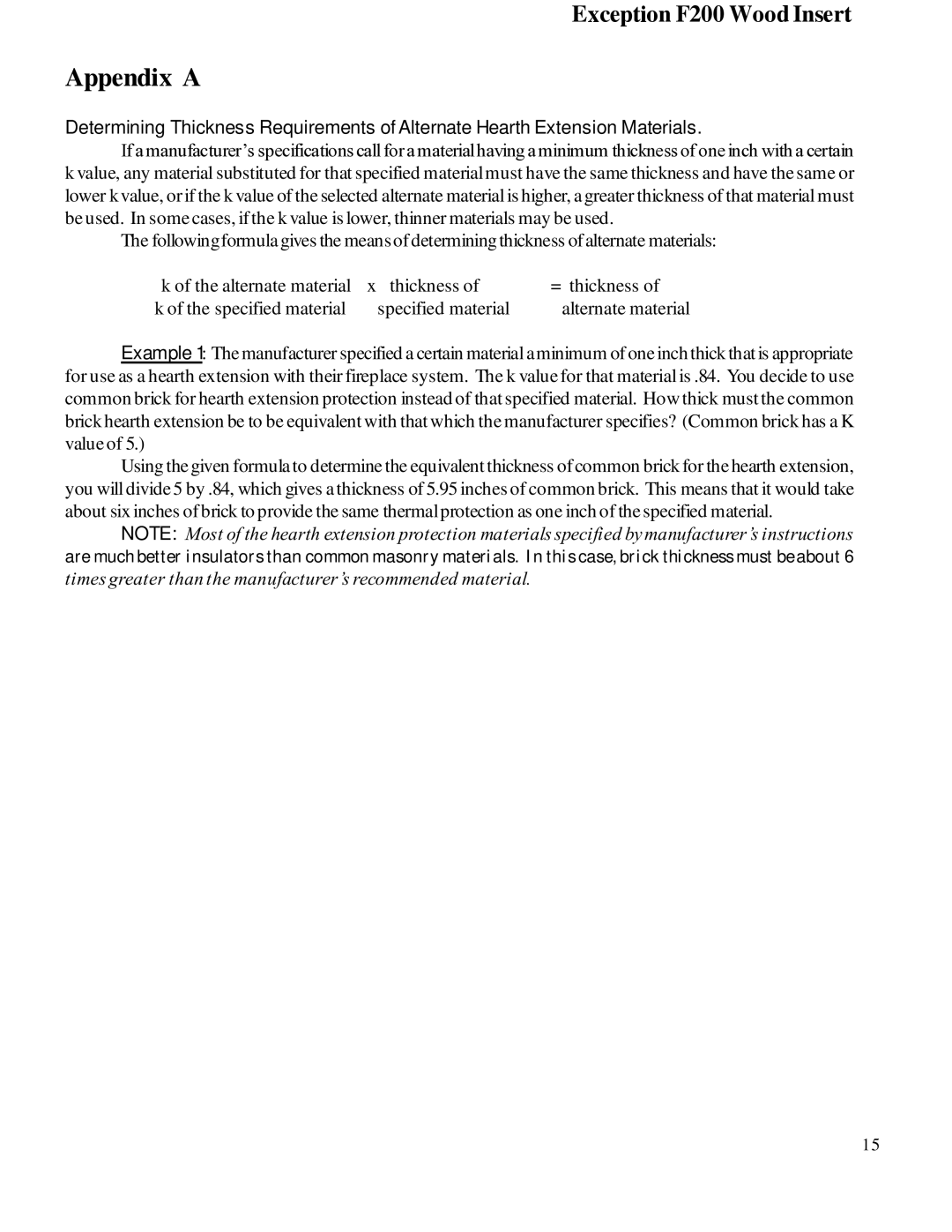R7R1 Exception Wood Fireplace specifications
The Harman Stove Company R7R1 Exception Wood Fireplace is an exceptional addition to any home, offering a blend of efficiency, style, and advanced technology in a traditional wood-burning fireplace design. Renowned for its commitment to quality and innovative heating solutions, Harman delivers a product that meets the dual demands of aesthetics and environmental responsibility.One of the standout features of the R7R1 Exception is its impressive heating capacity. This wood fireplace is designed to warm spaces of up to 2,400 square feet, making it ideal for larger homes or open-concept living areas. With a maximum output of 80,000 BTUs, this powerhouse ensures that you will stay cozy even during the coldest winter nights.
In terms of efficiency, the R7R1 Exception boasts an EPA-certified efficiency rating of up to 78%, meaning that it burns exceptionally cleanly while maximizing heat output. This not only reduces your carbon footprint but also lowers the frequency of wood refills, allowing for longer burn times between loads. The intelligent design incorporates advanced combustion technology, which ensures a more complete burn of the wood, leading to reduced emissions and less creosote buildup in the chimney.
The design of the R7R1 Exception is equally impressive, featuring a sleek, modern aesthetic that complements various home decors. The large viewing window provides an expansive view of the flames, enhancing the ambiance of your space. Harman also emphasizes user comfort, equipping the fireplace with a convenient air wash system that keeps the glass clean, ensuring a clear view of the fire.
Another key characteristic of the R7R1 Exception is its versatility. It can be installed either as a traditional flush mount or as a raised fireplace, giving homeowners flexibility in design according to their preferences. Additionally, the fireplace easily integrates with Harman's innovative Smart Air Technology, allowing for precise control over air intake and combustion for optimal heating performance.
Finally, the R7R1 Exception is constructed with high-quality materials and craftsmanship, ensuring durability and longevity. The robust firebox is lined with firebrick, which enhances thermal mass and efficiency, while the solid steel body offers both strength and modern appeal.
In summary, the Harman Stove Company R7R1 Exception Wood Fireplace combines exceptional heating performance, innovative technologies, and an aesthetically pleasing design. Its efficiency, adaptability, and ease of use make it a compelling choice for anyone looking to enhance their home's warmth and charm.
